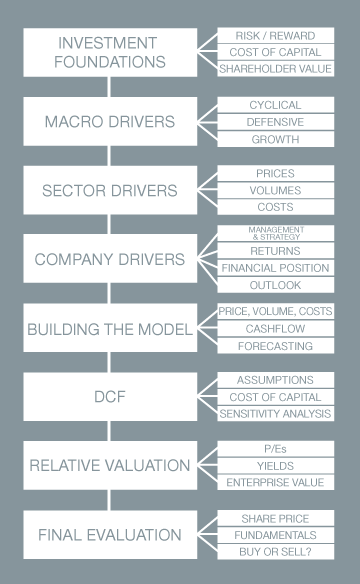Today’s businesses rely on a clear vision of business objectives to guide the scope of daily operations and make decisions about organizational changes. A strategic roadmap is a tool that helps to portray an organization’s future state goals and prompts managers to discover whether current business practices meet those goals. Businesses develop strategic roadmaps with the consensus of a range of stakeholders. Without a unilateral or mutually agreed upon strategic roadmap, businesses risk wasting significant time, money, and shareholder value.

Elements of a Strategic Roadmap
An effective strategic roadmap is a phased implementation path toward a future state business model consisting of an organization’s vision, mission, goals, objectives, a current state assessment and delta analysis to the desired future state. An organization should establish a Strategic Outlook Committee made up of relevant stakeholders with expertise in critical business areas to help define these strategic roadmap elements. Typically, this group reviews previously defined strategic roadmap elements to assess the performance against previously stated goals before establishing a new roadmap.
The establishment of an organizational vision is critical when planning for future success. The vision defines the organization and the values that make it differentiated in the marketplace; it shows current strengths and future aspirations. Describing the organizational vision is not to be taken lightly because the organization’s raison d’être is closely tied to its brand reputation. In this way, the vision affects an organization’s back office, middle office and customer facing operations.
A mission statement depicts the present state of an organization; it describes the organization’s current functions and the type of customers served. Mission statements outline what the company does, and its ideal state. The company’s Strategic Outlook Committee crafts the mission to include some foundational goals showing the reason for its current success and outlining how the company is going to become the great organization described in its vision.
While goals rather broadly depict the way that the organization expects to achieve its mission, objectives specifically describe ways to achieve both short-term mission goals and the long-term strategic vision. In addition to being specific, an organization’s objectives should be measurable, attainable, realistic, and time bound. The time-bound nature of objectives makes them ideal for measuring the success of short-term and long-term accomplishments.
Delta means “difference” or “change” in Greek and mathematical terminology. An organization’s
Delta Analysis is an evaluation of an organization’s current situation against a desired future state, and the difference between the two. These differences identify clear opportunities for improvement and should be rationalized into groups which the organization is not only ready to execute on, but also provide the highest return on investment. An organization’s current situation should be defined in measurable, quantifiable terms in order to give a proper foundation for moving forward. The Strategic Outlook Committee defines the organization’s future state by generating performance benchmarks in terms of investment cost, schedule, return on investment, and quality. For example, the Strategic Outlook Committee may set a customer care performance benchmark to be accomplished within three years of increasing the number of once and done call center inquiries to less than 3 percent per every 100 calls handled. This performance benchmark will not only drive higher customer satisfaction, but also drive lower overall operating cost to the call center. Depending on current situational factors, the group determines whether this benchmark is attainable and realistic. Once the group determines the performance benchmarks’ validity, it brainstorms perceived constraints and threats to accomplishing the benchmark. This is not to promote a defeatist attitude but to conduct early risk identification and mitigation strategy.
The organization’s tactical action plan to accomplish objectives and performance benchmarks culminates in a phased implementation strategy. This plan goes into detail about particular tasks assigned to specific business units or owners collectively working toward a clear, common vision. The strategy should incorporate the elements of change management to allow for time-bound, structured change leading to the desired end state which not simply allows the organization to brace for the change, but embraces the change to accelerate the achievement of performance benchmarks. Each task conducted and every benchmark met should trace back to the strategic vision.
Recognizing the Success of an Organization’s Strategic Roadmap
Implementing a strategic roadmap is only the beginning of the process leading to organizational success. To assess the effectiveness of the strategic roadmap, the Strategic Outlook Committee must plan periodic reviews for each of its elements. A continual Roadmap achievement assessment determines the extent to which the team met the objectives and performance benchmarks. The Strategic Outlook Committee bases the review timeline for the strategic roadmap upon the schedule of the performance benchmarks and objectives which further emphasizes the criticality of maintaining time-bound objectives and benchmarks. Additionally, dashboards leveraged to capture metrics about performance benchmarks and objectives are great tools to use on future projects.

